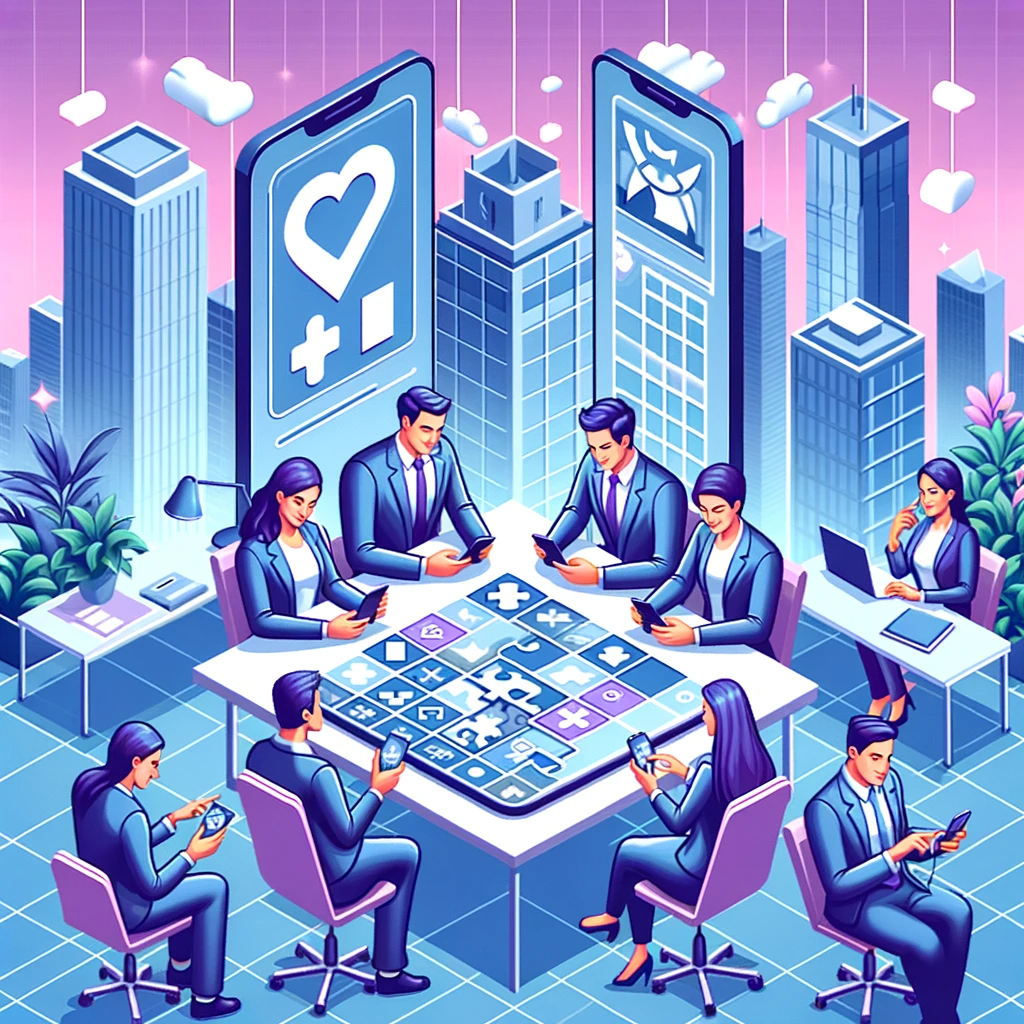The Difference Between Learning Games and Gamification
The Difference Between Learning Games and Gamification
How do gamification and learning games differ? This article teaches the difference between learning games and gamification and what is common for these techniques. Read more: How Does Gamification Work in Business.
Learning games
Game-based learning is a method for new skill learning through games where the purpose is primarily to achieve a goal – learn, instruct and improve skills. Sometimes learning games are applied to complex concepts teaching, team building and customer care training in a risk-free environment. Plus, learning games can include new skills applying and testing opportunities when simulating real-world scenarios. Learning games let employees fail, then learn from their mistakes and then try again. In this method, entertainment and enjoyment are the strategies to achieve the aim. The primary purpose of learning games is to educate and instruct.
Let’s name some learning games: puzzles, role-playing games, video games, word games and cards games. Learning games are also linked to serious games and simulations. These serious games and simulations are divided into immersive and procedural simulations. This method turns the learning process into an active stage. Learning games include narrative, challenges, feedback, goals, control in the participant’s hands.
Gamification
Gamification applies game elements to non-game contexts and processes without using fully-fledged games inside the activities. For example, adding these game design elements to already existing learning activities and programs. Gamification includes points, progress bars, levels, rewards, leaderboards, feedback, challenge, narrative, avatars and learner interaction. Rewards include medals, trophies, badges. Ranking systems like points and leaderboards are great in marking progress and knowledge.
Gamification doesn’t change other aspects of the training course like the content. Michael Armstrong and Richard Landers pointed out that these features are not tied directly to the content but are tied to the trainee’s behavior within the training system.
Research has proven gamification’s resultitavity in improved engagement and motivation. The method also promotes a specific behavior and involves target auditions like employees as learners.
Application of both learning games and gamification benefit in improved learning motivation, higher performance, deeper engagement and instant feedback. And also application of both methods make certain activities more game-like and have clear learning objectives.
Differences between gamification and learning games
Game elements integration depth
The main difference between learning games and gamification is games integration into the learning process. Learning games are the design of full-fledged games for non-entertainment purposes. Gamification is some game design element application that doesn’t affect the content.
Influence on content
Gamification doesn’t affect learning content. This method includes rewards and levels that boost motivation and engagement or simply “nudging” learners. Content stays the same when gamification elements are attached. At the same time, learning games require creating new learning content.
Necessary resources
The application of gamification elements doesn’t require that many resources. Learning game creation does take more resources like time, finance and knowledge. In the research, organizations highlight obstacles and challenges for learning games implementations: financial barriers, IT familiarity barriers, IT support/facilities barriers, information and practicality barriers.
Brandon Carson, Learning and Leadership Partner at Walmart, has written a great comparison: “Simulations put a person into an environment, gamification takes elements from games and places them into a business context.”









